- Home
- Directory
- Shop
- Underwater Cameras - Photographic Accessories
- Smartphone Housings
- Sea Scooters
- Hookah Dive Systems
- Underwater Metal Detectors
- Dive Gear
- Dive Accessories
- Diving DVD & Blu-Ray Discs
- Diving Books
- Underwater Drones
- Drones
- Subscriptions - Magazines
- Protective Cases
- Corrective Lenses
- Dive Wear
- Underwater Membership
- Assistive Technology - NDIS
- On Sale
- Underwater Gift Cards
- Underwater Art
- Power Stations
- Underwater Bargain Bin
- Brands
- 10bar
- AOI
- AquaTech
- AxisGo
- Backscatter Underwater Video and Photo
- BLU3
- Cayago
- Chasing
- Cinebags
- Digipower
- DJI
- Dyron
- Edge Smart Drive
- Eneloop
- Energizer
- Exotech Innovations
- Fantasea
- Fotocore
- Garmin
- Geneinno
- GoPro
- Hagul
- Hydro Sapiens
- Hydrotac
- Ikelite
- Indigo Industries
- Inon
- Insta360
- Intova
- Isotta Housings
- Jobe
- JOBY
- Kraken Sports
- LEFEET
- Mirage Dive
- Nautica Seascooters
- Nautilus Lifeline
- NautiSmart
- Nitecore
- Nokta Makro
- Oceanic
- Olympus
- OM System
- Orca Torch
- Paralenz
- PowerDive
- QYSEA
- Scubajet
- Scubalamp
- Sea & Sea
- SeaDoo Seascooter
- SeaLife
- Seavu
- Shark Shield
- Sherwood Scuba
- Spare Air
- StickTite
- Sublue
- Suunto
- SwellPro
- T-HOUSING
- Tusa
- U.N Photographics
- Venture Heat
- XTAR
- Yamaha Seascooter
- Youcan Robot
Heading North in Bali - Excellent diving and the ultimate tranquillity
Contributed by Tim Hochgrebe
Story by Tim Hochgrebe and Siggi Gudergan. Imagery by Tim Hochgrebe.
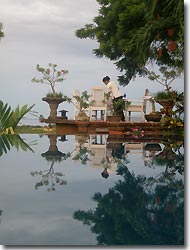 After
two weeks of diving around Ambon and the
Banda islands, northern Bali offered the
perfect place to chill out. A peaceful stretch where you can experience the
real Balinese lifestyle, it's a world away from the frantic mass tourism of
Kuta.
After
two weeks of diving around Ambon and the
Banda islands, northern Bali offered the
perfect place to chill out. A peaceful stretch where you can experience the
real Balinese lifestyle, it's a world away from the frantic mass tourism of
Kuta. 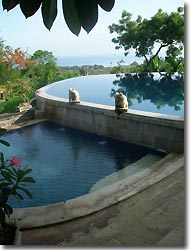
From Denpasar, we made our way across the mountains to the Zen
Resort Bali, on the north coast not far from Lovina. This was to be our
base for six nights. Passing Kintamani, we took in views of the active volcano
Gunung Batur and Lake Batur, and shared the winding road with monkeys, cows
and goats.
Overlooking the coast, Zen Resort Bali is set amid tropical gardens that form
a paradise so tranquil that it is impossible not to relax. As worries slip away
and peace of mind effortlessly replaces them, it's hard to remember what stress
felt like.
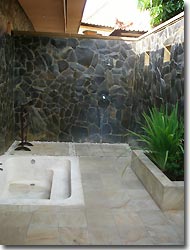 The
resort was set up as an integrated Ayurvedic health and nature retreat to offer
guests a complete break from everyday life. It aims to rejuvenate the mind,
body and spirit using concepts of holistic health and combining the best of
Zen philosophy, Ayurveda, yoga, pranayama (breathing) and meditation.
The
resort was set up as an integrated Ayurvedic health and nature retreat to offer
guests a complete break from everyday life. It aims to rejuvenate the mind,
body and spirit using concepts of holistic health and combining the best of
Zen philosophy, Ayurveda, yoga, pranayama (breathing) and meditation.
A one or one-and-a-half-hour Ayurvedic treatment with two therapists at the
resort's spa is a guaranteed route to relaxation and rejuvenation.
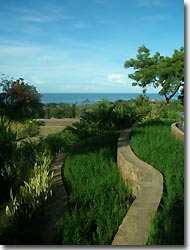 Guests
can choose any combination of the therapies and practices on offer. We discovered
a one or one-and-a-half-hour Ayurvedic treatment with two therapists at the
resort's spa was a guaranteed way to relax.
Guests
can choose any combination of the therapies and practices on offer. We discovered
a one or one-and-a-half-hour Ayurvedic treatment with two therapists at the
resort's spa was a guaranteed way to relax.
The resort's Balinese-style luxury rooms have comfortable verandas and an outdoor shower and bath. Overlooking the Balinese sea, they are the perfect complement to the relaxing ambience of the physical environment. A short walk from your room is the pool and outdoor restaurant, where guests can enjoy a mix of Western and Balinese food as well as, surprisingly, local wines.
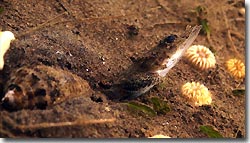 Indeed,
the area between Permuteran and Lovina, where the resort is situated, includes
a wine estate. Hatten's Wines operates about 15 hectares of prime vineyards,
where it cultivates red and green grape varieties that grow well in the climate.We
tried Hatten's Aga Red, Aga White and a rosé, all of which were very
drinkable. The range includes other whites as well as sparkling wines.
Indeed,
the area between Permuteran and Lovina, where the resort is situated, includes
a wine estate. Hatten's Wines operates about 15 hectares of prime vineyards,
where it cultivates red and green grape varieties that grow well in the climate.We
tried Hatten's Aga Red, Aga White and a rosé, all of which were very
drinkable. The range includes other whites as well as sparkling wines.
And so it was on to the diving, which we discovered matched the superb accommodation. There are excellent reefs nearby, as well as a fantastic wreck, and Puri Jati, or PJ as it is known, is on the doorstep and offers fabulous muck diving.
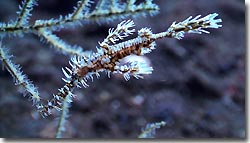
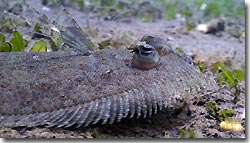
Puri Jati
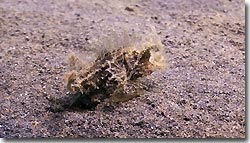 PJ
is a five-minute walk from the resort down through a valley that, with its vivid
green rice paddies is the epitome of Bali, on the edge of a black volcanic sand
beach.
PJ
is a five-minute walk from the resort down through a valley that, with its vivid
green rice paddies is the epitome of Bali, on the edge of a black volcanic sand
beach.
The beach features a concreted area surrounded by trees that provide shade for divers during their preparations, and for resting in between. There are gear benches, camera and dive gear rinse tanks, showers and toilets. Despite these amenities, all our dive gear quickly took on a thick coating of dark sand.
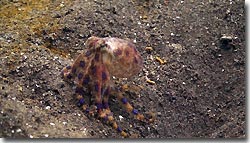 It's
just a stroll across the beach and a short swim to the dive site. For a few
hundred metres the underwater seascape is a lightly sloping dark sand incline
to about 12 metres, followed by a steep drop-off descending into the Bali Sea.
At the beginning of our dives the water was quite murky - visibility was less
than a metre. Gradually the visibility improved to about 10 metres, which was
fine for spotting all the critters for which PJ is famous.
It's
just a stroll across the beach and a short swim to the dive site. For a few
hundred metres the underwater seascape is a lightly sloping dark sand incline
to about 12 metres, followed by a steep drop-off descending into the Bali Sea.
At the beginning of our dives the water was quite murky - visibility was less
than a metre. Gradually the visibility improved to about 10 metres, which was
fine for spotting all the critters for which PJ is famous.
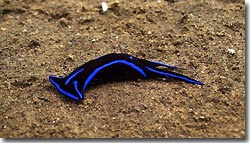 These
critters are well adapted to their environment, however, so it takes some time
to make out the range of creatures. They are able to either blend in completely
with the soft, dark sand, or appear and disappear into it at will. Once we grew
accustomed to the site, we spotted a mimic octopus, a blue-ringed octopus, various
frogfish, some ghost pipefish, snake eels and crocodile fish. We also saw Ambon
scorpion fish, cuttlefish, a wide variety of crabs and shrimps, various nudibrachs
and several seahorses - some hiding in the sand, behind rocks, or in tin cans,
an old shoe or bamboo sticks.
These
critters are well adapted to their environment, however, so it takes some time
to make out the range of creatures. They are able to either blend in completely
with the soft, dark sand, or appear and disappear into it at will. Once we grew
accustomed to the site, we spotted a mimic octopus, a blue-ringed octopus, various
frogfish, some ghost pipefish, snake eels and crocodile fish. We also saw Ambon
scorpion fish, cuttlefish, a wide variety of crabs and shrimps, various nudibrachs
and several seahorses - some hiding in the sand, behind rocks, or in tin cans,
an old shoe or bamboo sticks.
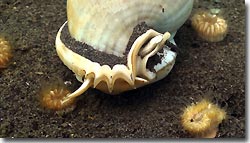 While
muck diving among dark volcanic rock and sand in murky waters might not sound
inviting at first, this array of wonderful creatures makes the site a must.
We spent two days diving there and as the dives are very shallow we stayed at
least one hour, sometimes two, each time - plenty of time to enjoy the critters.
After several dives we felt more knowledgeable about the site and knew where
to spot what - including fishermen. Don't be surprised if you're there to see
a fishing net dragging through the water across the sand just metres away.
While
muck diving among dark volcanic rock and sand in murky waters might not sound
inviting at first, this array of wonderful creatures makes the site a must.
We spent two days diving there and as the dives are very shallow we stayed at
least one hour, sometimes two, each time - plenty of time to enjoy the critters.
After several dives we felt more knowledgeable about the site and knew where
to spot what - including fishermen. Don't be surprised if you're there to see
a fishing net dragging through the water across the sand just metres away.
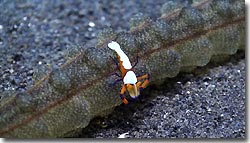
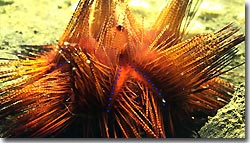
Tulamben
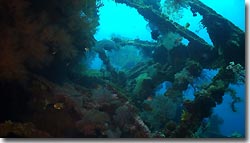 Two
hours drive from our resort, Tulamben boasts the wreck of the USS Liberty, a
cargo ship torpedoed by a Japanese sub back in 1942. While being towed to Singaraja,
she took on too much water and beached herself in the waters of Tulamben. Nowadays
she's a coral-covered wreck that forms a haven for numerous forms of marine
life and is probably the world's easiest wreck to dive.
Two
hours drive from our resort, Tulamben boasts the wreck of the USS Liberty, a
cargo ship torpedoed by a Japanese sub back in 1942. While being towed to Singaraja,
she took on too much water and beached herself in the waters of Tulamben. Nowadays
she's a coral-covered wreck that forms a haven for numerous forms of marine
life and is probably the world's easiest wreck to dive.
Local beach porters carried our equipment to a rocky beach, where we strapped
on our BCD and walked a few metres to the edge of the water; the wreck is just
a few meters from the shore. 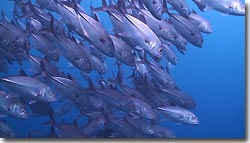 We
had good visibility and hardly any current. The lowest point of our two dives
would not exceed 30 metres and we explored the wreck's 120-metre long hull.
We spied a resident school of big eye trevally as well as a variety of creatures
hovering around the anemones, gorgonian and coral-encrusted remains of the ship.
We
had good visibility and hardly any current. The lowest point of our two dives
would not exceed 30 metres and we explored the wreck's 120-metre long hull.
We spied a resident school of big eye trevally as well as a variety of creatures
hovering around the anemones, gorgonian and coral-encrusted remains of the ship.
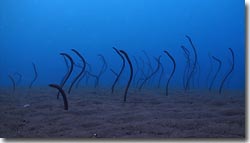 Our
first dive began with a swim through an eel garden at around 8 metres. From
there we went east to the stern and swam through the rudder at about 10 metres,
past portholes at about 15 metres, then explored the quarterdeck and descended
from 2 to 20 metres. The stern gun is located at around 20 metres and a winch
with a steel cable at 25 metres. Continuing north, we explored the collapsed
bulkhead at around 20 to 25 metres, and the Danforth anchor at 28 metres. We
Our
first dive began with a swim through an eel garden at around 8 metres. From
there we went east to the stern and swam through the rudder at about 10 metres,
past portholes at about 15 metres, then explored the quarterdeck and descended
from 2 to 20 metres. The stern gun is located at around 20 metres and a winch
with a steel cable at 25 metres. Continuing north, we explored the collapsed
bulkhead at around 20 to 25 metres, and the Danforth anchor at 28 metres. We
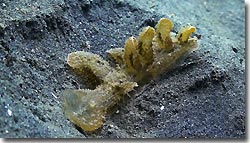 entered
the wreck below the foredeck, where we were amazed by huge formations of beautiful
soft coral, tubestrea and gorgonian fans. Not far from the foredeck gun, at
around 20 metres, we came across a barrel sponge covered with spectacular fans.
Continuing on, we found the anchor chain at 30 metres.
entered
the wreck below the foredeck, where we were amazed by huge formations of beautiful
soft coral, tubestrea and gorgonian fans. Not far from the foredeck gun, at
around 20 metres, we came across a barrel sponge covered with spectacular fans.
Continuing on, we found the anchor chain at 30 metres.
The return trip to the stern on the western side of the wreck offers a side and top swim-through into the hold, where we saw a school of trevally. With a final swim-through past the propeller shaft tunnel, we reached the eel garden again and made our way back to the shore. On our second dive we took the same route but spotted different critters this time around.
The trip to Tulamben to dive the wreck of USS Liberty is well worthwhile, offering easy access, low depth, a variety of fish and interesting critters, and beautiful corals.
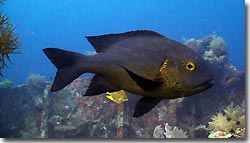
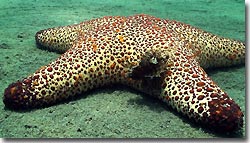
Menjangan Island
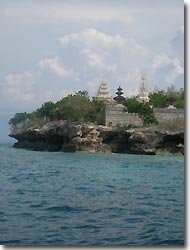 One
of Bali's top dive sites would have to be Menjangan Island. It was a good 50-minute
drive from our resort to a small area where we boarded a local boat from which
we would be diving. The island and its surrounding coral reefs are part of the
Bali Barat National Park, comprising 780 square kilometres of protected area.
The island itself is surrounded by pristine white sand beaches. The coral formations
close to the shore are fantastic for both diving and snorkelling.
One
of Bali's top dive sites would have to be Menjangan Island. It was a good 50-minute
drive from our resort to a small area where we boarded a local boat from which
we would be diving. The island and its surrounding coral reefs are part of the
Bali Barat National Park, comprising 780 square kilometres of protected area.
The island itself is surrounded by pristine white sand beaches. The coral formations
close to the shore are fantastic for both diving and snorkelling.
The coral reef has deep drop-offs of up to 60 metres and byzantine rock formations, including a variety of caves, and hard, sponge and soft corals. This environment makes a wonderful habitat for a variety of fish, including groupers, moray eels and batfish. They're joined by an array of smaller creatures - gobies, frogfish, scorpionfish, lionfish, blennies, and nudibranchs.
Our wall dive was the more interesting one in this area - not as good as, say Palau, but still enjoyable. It is reputed to be the best wall dive around Bali. Among the abundant fish life, we noted the great diversity of gorgonian fans on the walls. Swarming with medium and small fish, the walls are full of small nooks and crannies, overhangs and larger crevasses, and covered with large soft corals, gorgonian fans and huge sponges.
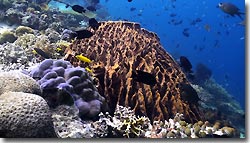
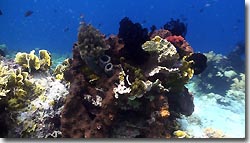
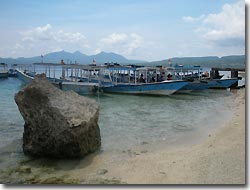 On
our second dive, we took in some shallower walls as well as a very large colony
of garden eels. A vast, shallow, sandy bottom area is alive with garden eels
and full of magnificent hard corals, including large gorgonian fans, and huge
barrel sponges. On this dive we also encountered angelfish, lionfish, scorpionfish,
anemone fish, trumpet fish and a school of pelagics.
On
our second dive, we took in some shallower walls as well as a very large colony
of garden eels. A vast, shallow, sandy bottom area is alive with garden eels
and full of magnificent hard corals, including large gorgonian fans, and huge
barrel sponges. On this dive we also encountered angelfish, lionfish, scorpionfish,
anemone fish, trumpet fish and a school of pelagics.
So, Northern Bali is in sharp contrast to the mass tourism areas in the South
... an area which invites to enjoy Bali in its real form and to do some wonderful
diving.
Shopfront
-
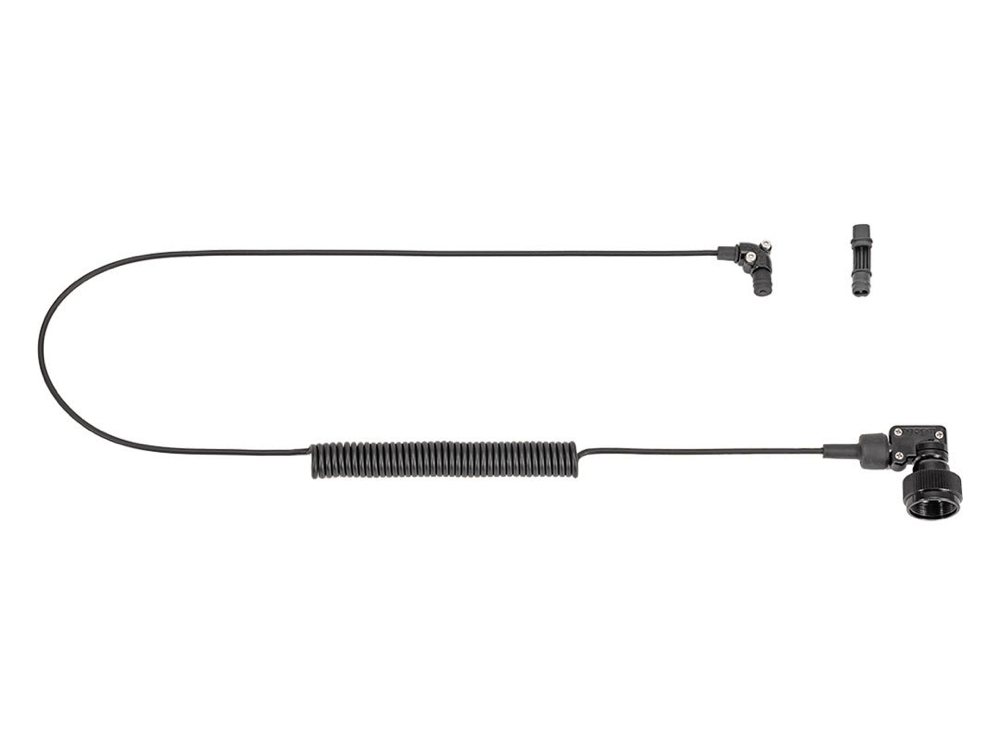 Inon Optical D Cable L Type L Rubber Bush Set 2
Inon Optical D Cable L Type L Rubber Bush Set 2
- Price A$ 139.00
-
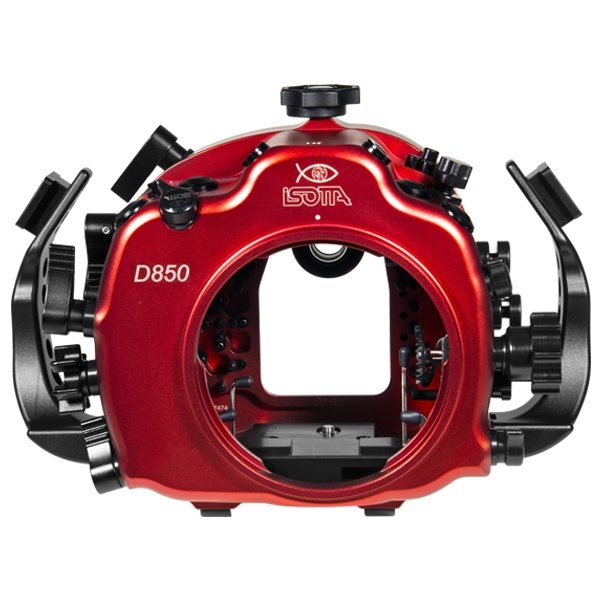 Isotta Underwater dSLR Camera Housings
Isotta Underwater dSLR Camera Housings
- Price A$ 5,799.00
-
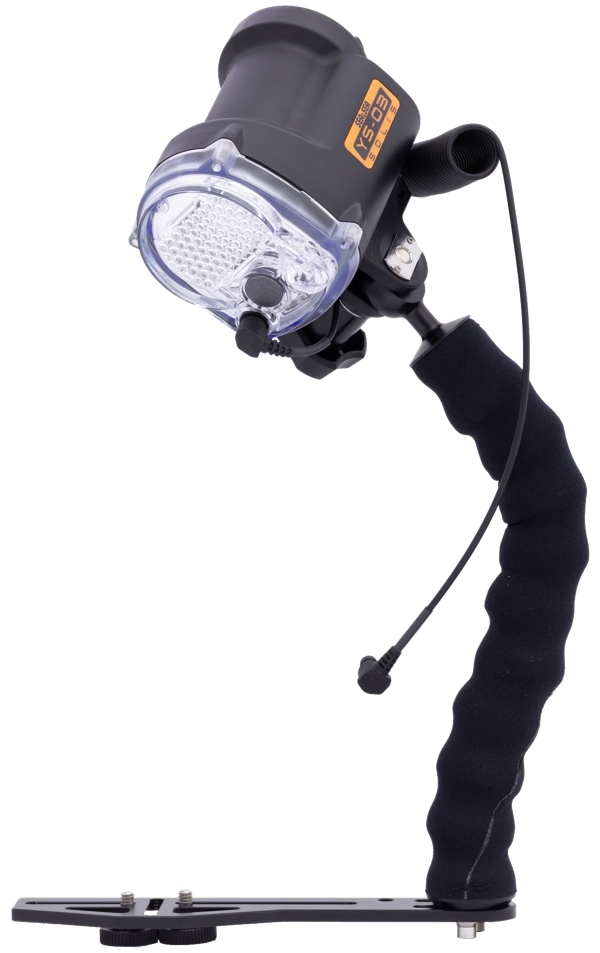 Sea & Sea YS-03 SOLIS Universal Lighting System Kit
Sea & Sea YS-03 SOLIS Universal Lighting System Kit
- Price A$ 849.00
-
 Insta360 X4 8K 360 Action Camera
Insta360 X4 8K 360 Action Camera
- Price A$ 869.00
In the Directory



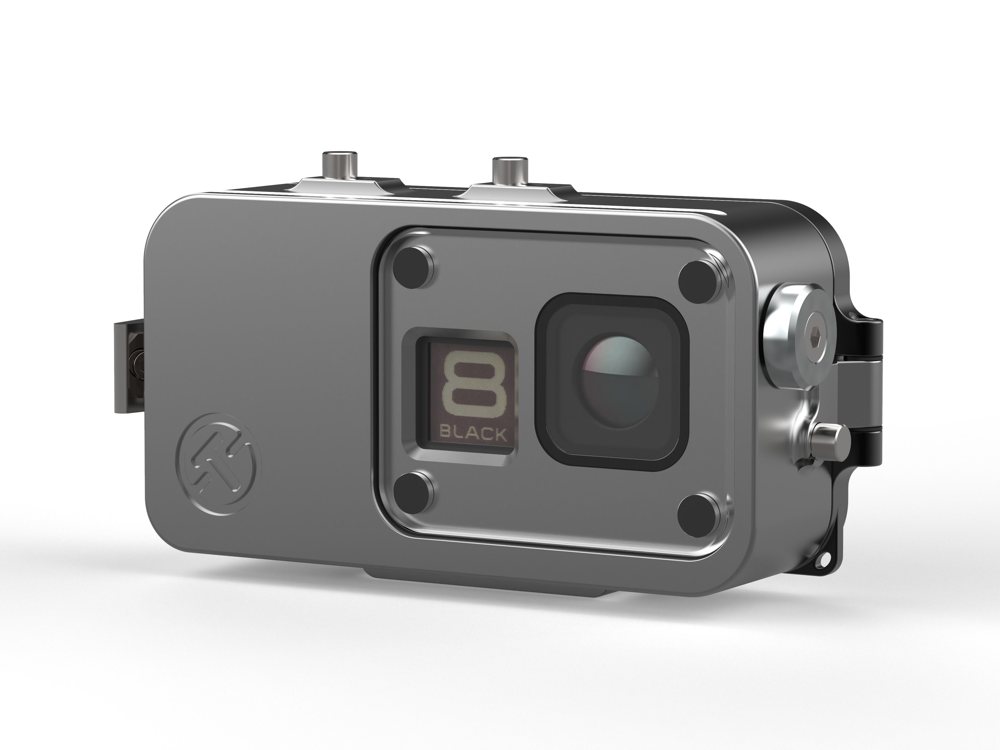
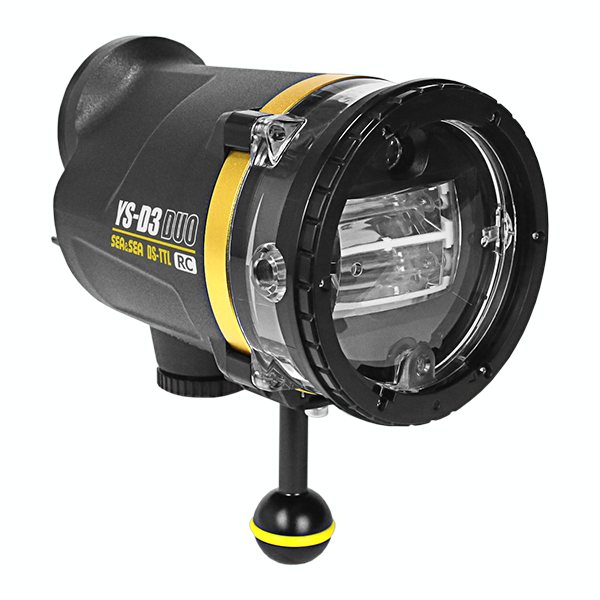
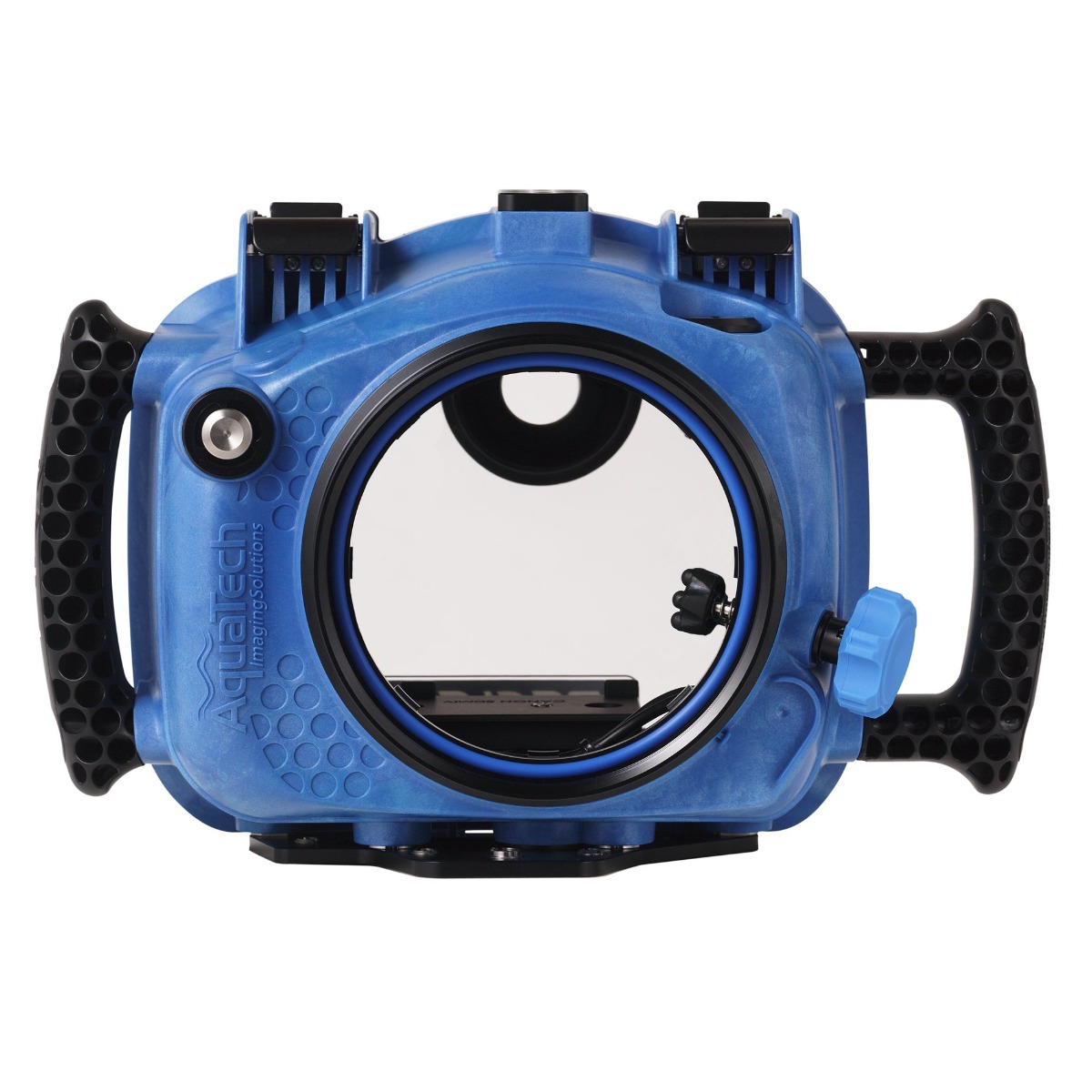
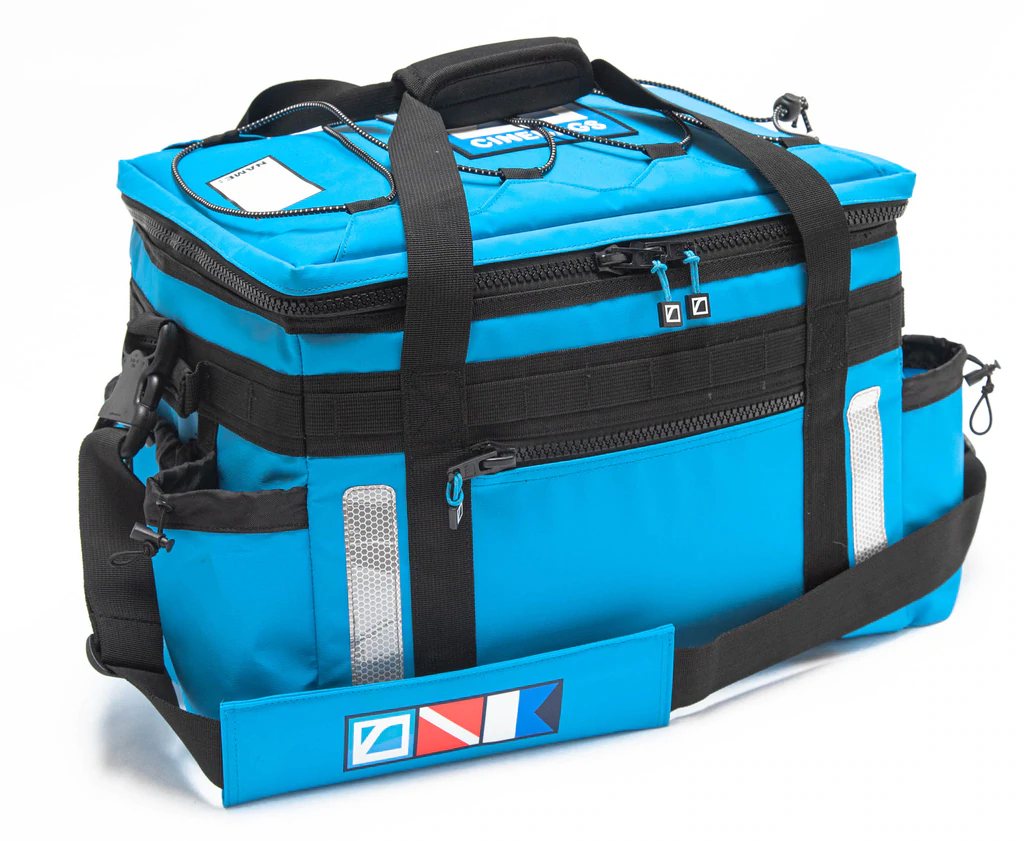



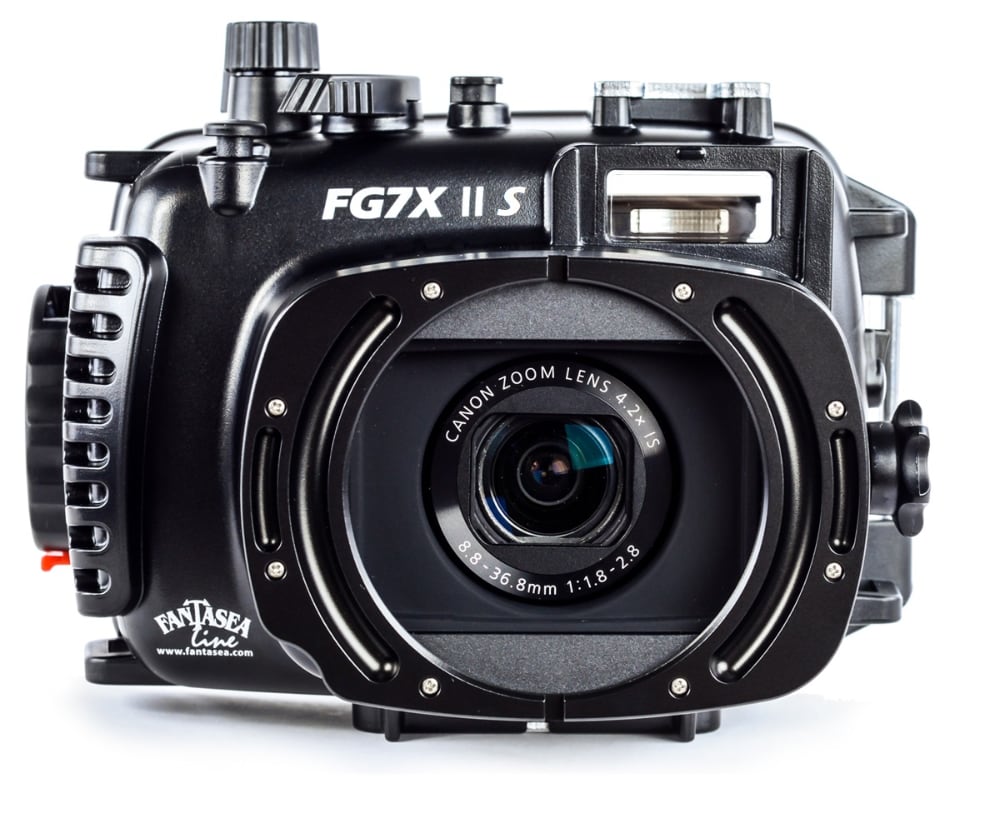



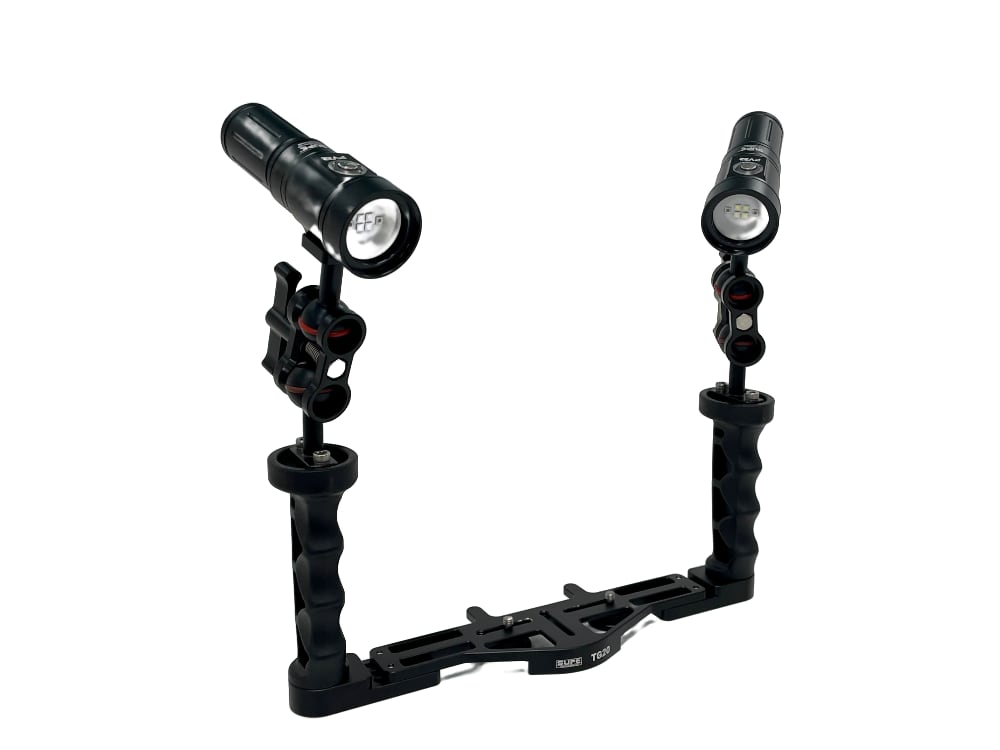 Video Light Package with tray and arms - 4000 lumens - Scubalamp PV22 x 2
Video Light Package with tray and arms - 4000 lumens - Scubalamp PV22 x 2  SeaLife Sea Dragon 3000F with Color Boost™ Auto Photo/Video Light
SeaLife Sea Dragon 3000F with Color Boost™ Auto Photo/Video Light 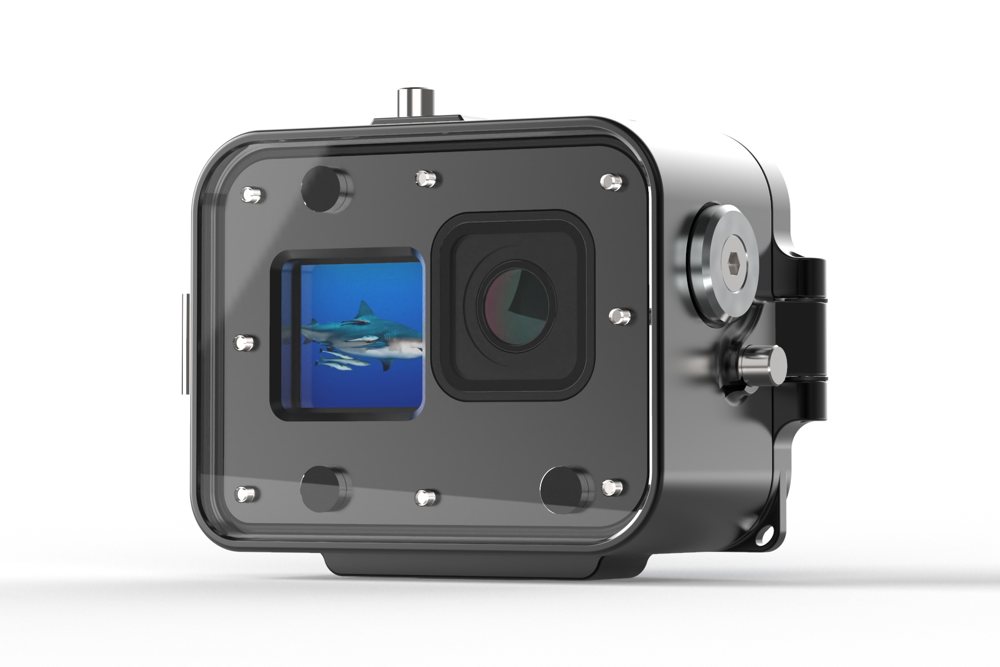 T-Housing Aluminium Deepdive Housing for GoPro Hero9 Hero10 HERO11 HERO12 and HERO13
T-Housing Aluminium Deepdive Housing for GoPro Hero9 Hero10 HERO11 HERO12 and HERO13  Dual Beam Video Light Package with tray and arms - 4000 lumens - Scubalamp PV21 x 2
Dual Beam Video Light Package with tray and arms - 4000 lumens - Scubalamp PV21 x 2 




